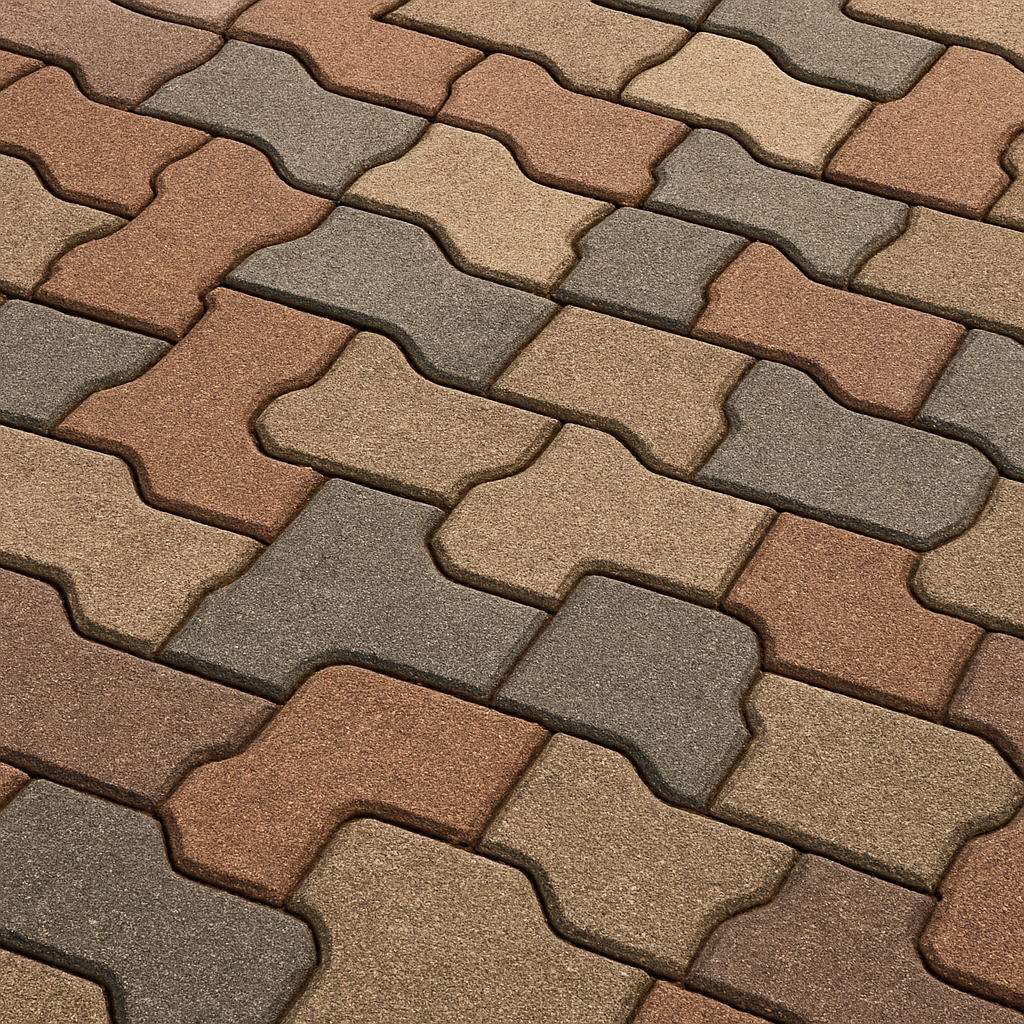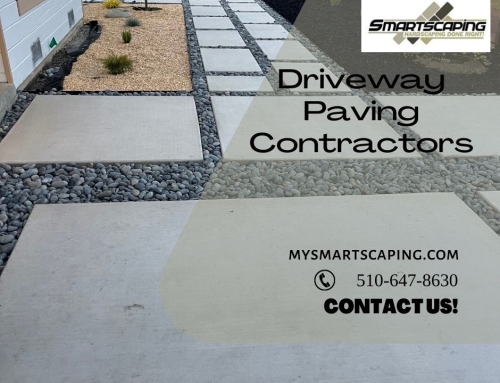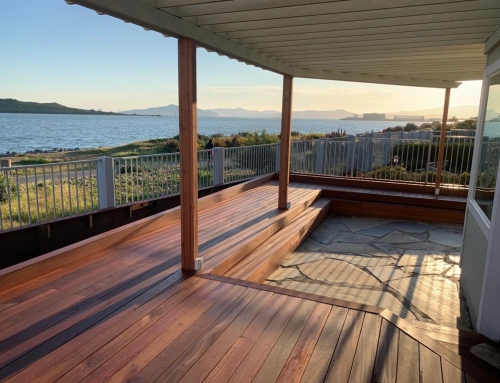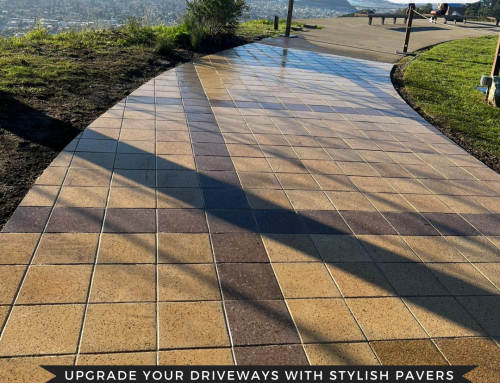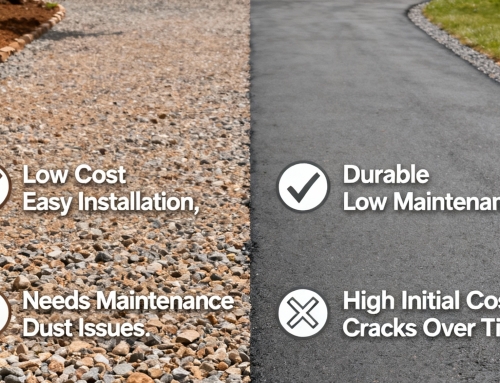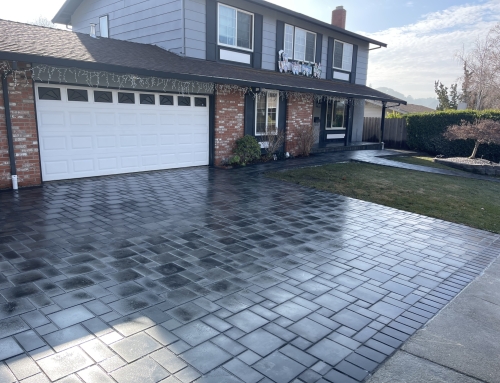When it comes to choosing a durable, stylish, and long-lasting surface for your driveway, patio, walkway, or outdoor living area, the debate between interlocking pavers and poured concrete is more relevant than ever. Homeowners and property managers alike are searching for answers to questions like: Are interlocking pavers cheaper than concrete? How long does interlocking take? What are the basic methods of interlocking? This comprehensive guide addresses these key questions, offering insights that will help you make an informed decision.
At Smartscaping, we specialize in providing high-quality paving solutions tailored to meet our clients’ unique aesthetic and functional needs. Whether you’re installing a new patio or replacing an old driveway, understanding the advantages and limitations of interlocking pavers versus concrete is crucial for long-term satisfaction and value.
Are Interlocking Pavers Cheaper Than Concrete?
The cost of any paving project depends on various factors—materials, labor, preparation, and size of the area to be paved. While concrete and interlocking pavers serve similar purposes, their pricing structures differ significantly in both upfront cost and long-term value.
1. Initial Cost Comparison
-
Poured Concrete: The average cost of poured concrete ranges from $6 to $10 per square foot, depending on complexity, finish, and region. For a simple concrete driveway or patio, this can seem like a budget-friendly option.
-
Interlocking Pavers: Interlocking pavers cost between $10 to $25 per square foot, which includes materials and labor. At first glance, this appears more expensive.
So, yes—interlocking pavers are initially more costly than poured concrete. But that doesn’t mean they’re the more expensive option in the long run.
2. Longevity and Maintenance
Concrete tends to crack over time due to ground movement, weather cycles, and weight loads. Repairs usually involve patching or replacing entire sections, which can be costly and unsightly.
Interlocking pavers, on the other hand, are designed to shift slightly without cracking. If a paver gets damaged or stained, it can be replaced individually, saving you from expensive repairs. They also offer superior drainage, reducing the risk of pooling and water damage.
When factoring in longevity, maintenance, and repair costs, interlocking pavers often turn out to be the more cost-effective solution over 20-30 years.
3. Property Value and Curb Appeal
Interlocking pavers provide a premium look that enhances curb appeal. Unlike plain concrete, pavers come in various colors, shapes, and patterns, offering a high-end finish that can increase your home’s resale value. This aesthetic edge adds long-term financial benefits that basic concrete typically can’t match.
How Long Does Interlocking Take?
Another major consideration for homeowners is the project timeline. How long will your driveway or patio be under construction? When can you resume using the area?
1. Project Scope Matters
The duration of an interlocking paver installation depends on the size and complexity of the job. For example:
-
Small patio (200–400 sq. ft.): 2–3 days
-
Standard driveway (800–1,200 sq. ft.): 4–6 days
-
Larger or custom projects: 1–2 weeks
2. Step-by-Step Timeline
Here’s a breakdown of what happens during an interlocking paver installation:
-
Site Preparation (1–2 days): Excavation, grading, and removal of existing materials.
-
Base Installation (1 day): Laying and compacting the gravel base to ensure stability.
-
Sand Bedding (half-day): Spreading and leveling the sand layer, which acts as a cushion.
-
Paver Laying (1–3 days): Placing each paver according to the chosen pattern.
-
Edge Restraints & Joint Sand (1 day): Locking everything in place using polymeric sand and edge restraints.
-
Clean-up and Final Compaction (half-day): Tidying up and compressing the finished surface.
So, a typical interlocking paver project could be completed in less than a week, depending on the experience of your paving contractor and weather conditions.
By comparison, poured concrete requires setting and curing time, often up to 7–10 days before it can be fully used. With pavers, the area is typically usable immediately after installation.
What Are the Three Basic Methods of Interlocking?
Interlocking pavers get their strength from the way they’re installed—not from any adhesive or concrete. The term “interlocking” refers to how the pavers fit together to form a flexible yet solid surface. Let’s explore the three basic methods of interlocking:
1. Mechanical Interlock
This is the most fundamental principle of interlocking pavers. Each paver is placed snugly against its neighbors in a way that restricts lateral movement. The tightly packed edges form a continuous surface, and the pressure of one paver reinforces the position of the others.
-
Key Advantage: High load-bearing capacity; ideal for driveways and high-traffic areas.
-
Design Impact: Allows for complex patterns such as herringbone, basketweave, or running bond to enhance strength.
2. Frictional Interlock
This type of interlock depends on the friction between pavers and the bedding sand below. When installed correctly, the weight of the pavers pushes down on the sand bed, increasing surface friction and stability.
-
Key Advantage: Resistance to vertical movement.
-
Design Impact: Requires precise grading and compaction to be effective.
3. Structural Interlock
Structural interlocking is achieved through the use of special paver shapes—such as T-shaped or zigzag edges—that physically lock into one another, offering superior resistance to shifting and separation.
-
Key Advantage: Best for heavy-duty applications like commercial driveways and public spaces.
-
Design Impact: Offers both strength and a unique, intricate appearance.
Each method plays a role in ensuring that interlocking pavers remain stable, durable, and beautiful even under harsh environmental conditions. A seasoned paving contractor will often use a combination of these methods depending on the site-specific needs.
Why Homeowners in Piedmont Prefer Interlocking Pavers
If you’re located in Piedmont or the surrounding Bay Area, you’ve likely noticed the rise in interlocking paver installations. From elegant garden paths to robust driveways, interlocking pavers Piedmont projects are on the rise—and for good reason.
1. Earthquake Resilience
In seismic regions like Northern California, flexibility is key. Unlike concrete, which can crack during earth shifts, pavers can adjust slightly without permanent damage. This makes them a safer and more resilient option.
2. Drainage and Permeability
Piedmont receives a fair amount of rain, and stormwater management is crucial for both private and public spaces. Interlocking pavers can be installed with permeable joints that allow water to pass through, reducing runoff and erosion issues.
3. Elegant Customization
Whether your home has a modern, colonial, or craftsman design, interlocking pavers can be selected and arranged to complement your architecture. From color to texture, they offer a high level of customization.
Choosing the Right Paving Contractor
The key to a successful interlocking paver installation is hiring an experienced, licensed, and local paving contractor. Here are some tips to ensure you make the right choice:
1. Look for Experience with Interlocking Pavers
Not all paving contractors specialize in interlocking systems. Make sure your contractor has specific experience with interlocking pavers and can provide a portfolio of similar projects.
2. Ask About Base Preparation
A durable paver project starts from the ground up. Inquire about excavation, drainage considerations, and the quality of the base material they use. Cutting corners on the base leads to costly problems down the line.
3. Check Local Reviews and References
Ask for testimonials from homeowners in your area. A reputable contractor in Piedmont will have a list of satisfied clients and possibly even local awards or recognitions.
4. Licensing and Insurance
Always verify that your paving contractor is licensed, bonded, and insured. This protects you from liability and ensures compliance with local building codes.
5. Warranty and Post-Installation Support
Top-tier contractors offer warranties that cover materials and labor. At Smartscaping, we stand behind every project and provide maintenance recommendations to ensure your pavers last for decades.
Final Thoughts: Pavers or Concrete—Which Is Right for You?
While poured concrete is an acceptable choice for certain applications, interlocking pavers offer far more in terms of durability, aesthetics, repairability, and long-term value. Though they come with a higher upfront cost, the reduced maintenance, superior strength, and beautiful appearance make them a wise investment.
Add to that the relatively quick installation timeline and the benefits of flexible interlocking systems, and it’s clear why so many homeowners in Piedmont are making the switch.
If you’re ready to enhance your outdoor space with a timeless and resilient surface, reach out to Smartscaping. Our team of experienced professionals is ready to transform your vision into reality—on time, on budget, and built to last.


